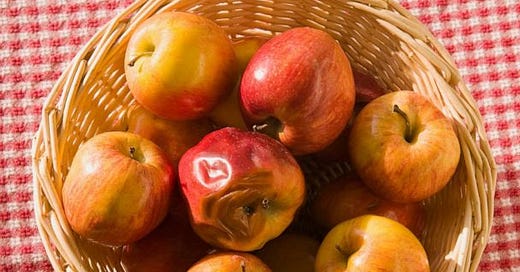I’m back for Part 2 while hiding away and trying to finish my thesis for grad school and…yeah.
Highly recommend checking out Part 1 if you haven’t already so you know what I’m attempting to do here.
My second list for you this month is a number of *unconventional* creative nonfiction essays and articles. Turns out creative nonfiction is everywhere, sort of!

As always, this is not a comprehensive list or even close to a survey of all creative nonfiction. I haven’t put them in any particular order either. I am influenced by my (sometimes questionable) taste and experiences—take from this list what you will.
Graphic Memoirs:
Maus by Art Spiegelman: Visual art very much has a place within the creative nonfiction world, perhaps most notably in graphic memoir. Art Spiegelman is a pioneer of this genre. He illustrates his attempts to connect with his father, a Holocaust survivor, and record his memories. Spiegelman substitutes animals in place of humans, but the story is no less wrenching.
The Complete Persepolis by Marjane Satrapi: Originally released in several shorter volumes, Satrapi’s coming-of-age story growing up the daughter of intellectual, activist parents in Iran before the revolution. When their home becomes too dangerous, she’s sent away to live in Europe. For all the simple boldness of her drawings, the story itself is complicated, fraught, and emotional.
Fun Home: A Family Tragicomic by Allison Bechdel: This was the first graphic memoir I ever read, and it blew my mind. I was a freshman in college, and I’d never read or seen anything like it. Now a famous Broadway musical, the graphic memoir follows writer and illustrator Allison Bechdel as she pieces together her father’s mysterious life and suicide, as well as her own sexual identity.
Can’t We Talk About Something More Pleasant? by Roz Chast: The only child of a neurotic and oftentimes downright odd set of parents living in Brooklyn, New Yorker cartoonist Roz Chast captures her parents’ failing health and her struggles to care for them despite their complicated relationship. Deeply funny, honest, and emotional, Chast’s voice is singular and spectacular.
The Best We Could Do: An Illustrated Memoir by Thi Bui: I would argue this is one of the most visually stunning of the bunch I’ve listed here. Bui, a new mother, thinks back to her own childhood growing up the daughter of Vietnamese refugees in America after the Vietnam War. Documenting their hellish escape out of the country, as well as the difficulties they faced when they arrived in America, it’s a deeply moving, and very American, story.
Cultural Critique, but Make’Em Weird:
“As Not Seen On TV” by Pete Wells (NYT): A restaurant review for Guy Fieri’s restaurant, written as a series of questions. Yes, really.
“Malfunctioning Sex Robot” by Patricia Lockwood (LRB): Lockwood showed up in Part 1 of this two-parter newsletter for a reason. She’s equal parts brilliant and raunchy and poignant. In what is supposed to be a review of a collection of John Updike’s novels, Lockwood starts with, “I was hired as an assassin. You don’t bring in a 37-year-old woman to review John Updike in the year of our Lord 2019 unless you’re hoping to see blood on the ceiling.” And there will be blood, indeed.
“The 2020 Hater’s Guide to the Williams-Sonoma Catalogue” by Drew Magary (Vice): Every year, Magary writes a reactionary screed inspired by the William-Sonoma’s holiday catalogue. If you’ve ever flipped through a print catalogue for housewares and thought, “are there truly WASPs who still order this stuff?,” this one’s for you. Not even the peppermint bark is safe: “You cannot utter the phrase “triple-distilled oil of peppermint” without cackling like a green witch. I now have the perfect vehicle for poisoning all of my greatest enemies: Bon Jovi, cat people, Cazzie David, Scott Caan, that one Pope who retired, aggro UPS drivers, and so forth.”
“How Apples Go Bad” by Helen Rosner (The New Yorker): Short yet stunning, food writer Helen Rosner explores just how insidious an apple’s rot can be. The essay mirrors the political moment, in which pro-law enforcement folks claimed that police brutality could only be found “in a few bad apples.” And as Rosner points out, there’s never just one bad apple.
Essay-ish Works That Haven’t Fit My Other Categories But Are Still Very Much Worth Reading:
“Tiny Beautiful Things” by Cheryl Strayed (The Rumpus): What is supposed to be an advice column letter ends up being a very sweet and sad collection of Strayed’s memories of her 20s.
“Soup Can; or, On Hospitality” by Wendy S. Walters (The Yale Review): I’m deeply biased here because Walters was my professor in grad school, but I love this take on hospitality, race and class, how we greet the “other,” and, of course, soup cans.
300 Arguments by Sarah Manguso: Manguso wrote a book that is, quite simply, 300 short little arguments. Claims without evidence, divorced from further explanation. It is, obviously, a short read, but a powerful one.
The Book of Delights by Ross Gay: Poet and essay Ross Gay writes brief essays every day for a year listing what brings him delight and joy each and every day. It is serene, heartfelt, a fast read, and one that makes you grateful for the small things.
Hopefully by my next newsletter, I’ll be done thesis-ing and back to my normal content. Until then, take care and happy reading, folks.





